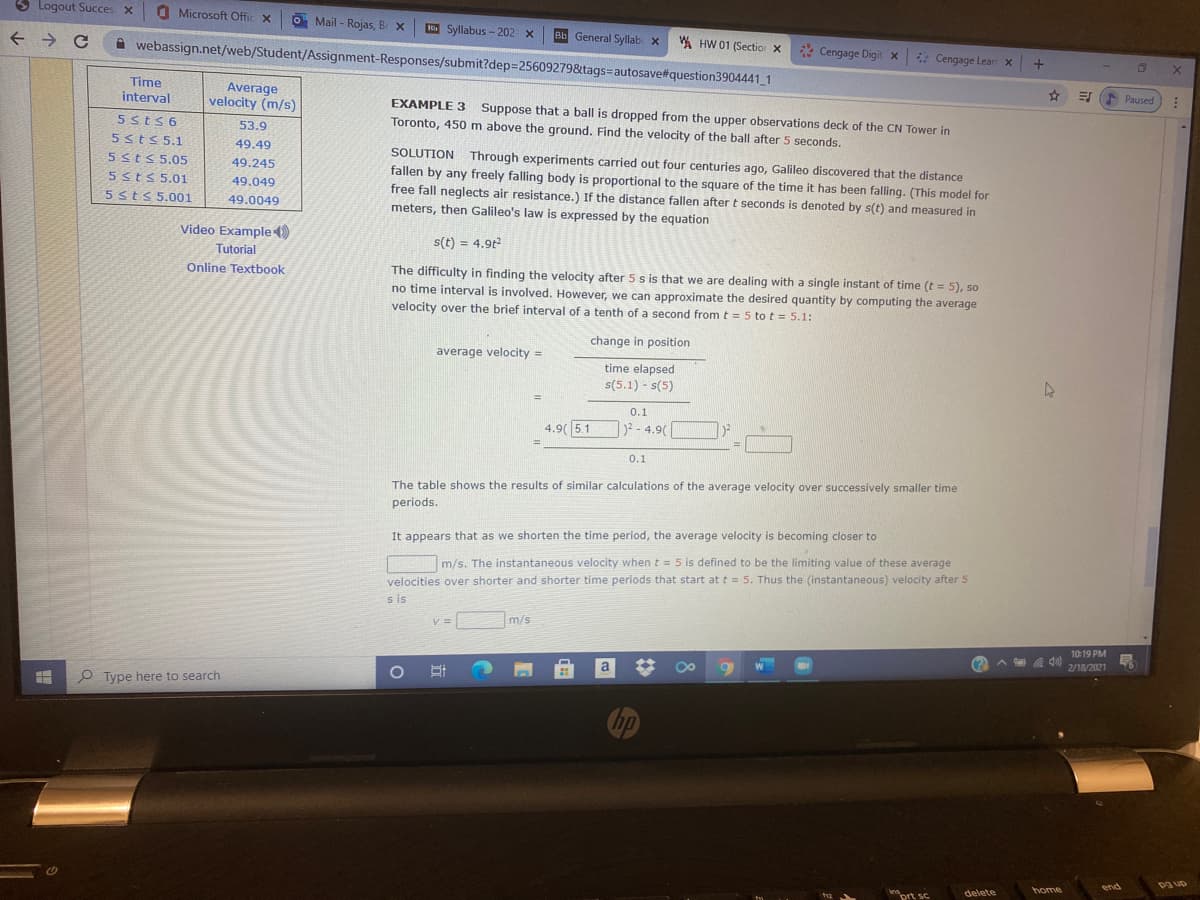E Paused Time interval Average velocity (m/s) EXAMPLE 3 Suppose that a ball is dropped from the upper observations deck of the CN Tower in Toronto, 450m above the ground. Find the velocity of the ball after 5 seconds. 5Sts6 53.9 5sts 5.1 49.49 SOLUTION Through experiments carried out four centuries ago, Galileo discovered that the distance fallen by any freely falling body is proportional to the square of the time it has been falling. (This model for free fall neglects air resistance.) If the distance fallen after t seconds is denoted by s(t) and measured in meters, then Galileo's law is expressed by the equation 5Sts 5.05 49.245 5sts 5.01 49.049 5 sts 5.001 49.0049 Video Example) s(t) = 4.9t %3D Tutorial The difficulty in finding the velocity after 5 s is that we are dealing with a single instant of time (t = 5), so no time interval is involved. However, we can approximate the desired quantity by computing the average velocity over the brief interval of a tenth of a second from t = 5 to t = 5.1: Online Textbook change in position average velocity = time elapsed s(5.1) - s(5) 0.1 4.9(5.1 2-4.9( 0.1 The table shows the results of similar calculations of the average velocity over successively smaller time periods. It appears that as we shorten the time period, the average velocity is becoming closer to m/s. The instantaneous velocity when t = 5 is defined to be the limiting value of these average velocities over shorter and shorter time periods that start at t= 5. Thus the (instantaneous) velocity after 5
Continuous Probability Distributions
Probability distributions are of two types, which are continuous probability distributions and discrete probability distributions. A continuous probability distribution contains an infinite number of values. For example, if time is infinite: you could count from 0 to a trillion seconds, billion seconds, so on indefinitely. A discrete probability distribution consists of only a countable set of possible values.
Normal Distribution
Suppose we had to design a bathroom weighing scale, how would we decide what should be the range of the weighing machine? Would we take the highest recorded human weight in history and use that as the upper limit for our weighing scale? This may not be a great idea as the sensitivity of the scale would get reduced if the range is too large. At the same time, if we keep the upper limit too low, it may not be usable for a large percentage of the population!

Trending now
This is a popular solution!
Step by step
Solved in 2 steps with 1 images






